Thirty years ago, Mark Anderson sat down with a copy of the newspaper and a pen. He circled four, maybe five ads. By nightfall, he’d found his new home: a bachelor apartment for $350 a month in Lower City, a part of Hamilton beneath the brow of the Niagara Escarpment.
Fast-forward to 2018, and Anderson was again looking for a place to live in Steel City. This time, he opened up kijiji.com. But as he scrolled and scrolled, he couldn’t find a single apartment he could afford on his disability allowance. He eventually found a basement spot — actually just lucked into it, he says.
“It’s warm,” says Anderson. “I’ve got a fridge. It’s secure.”
Anderson is one of the lucky ones. As more and more Torontonians flee sky-high housing costs and big-city stress for the “oasis of value and space” of Hamilton, hundreds of low-income residents have been driven out of once-affordable neighbourhoods.
The scramble for affordable rental housing has become increasingly desperate, as the exodus from Toronto has grown – a trend that has accelerated since the pandemic hit in March 2020, as more urban professionals who can work remotely retreat to the area.
The city has struggled to cope with nearly 15 tent cities, and the number of homeless people is believed to have increased significantly in 2020.
The situation is coming to an angry head: in December, local activists staged a two-week protest at city hall, demanding that the city cut 50 per cent of the police budget and divert some of it to housing initiatives — while also dedicating its $567,000 budget surplus to alleviate the crisis.
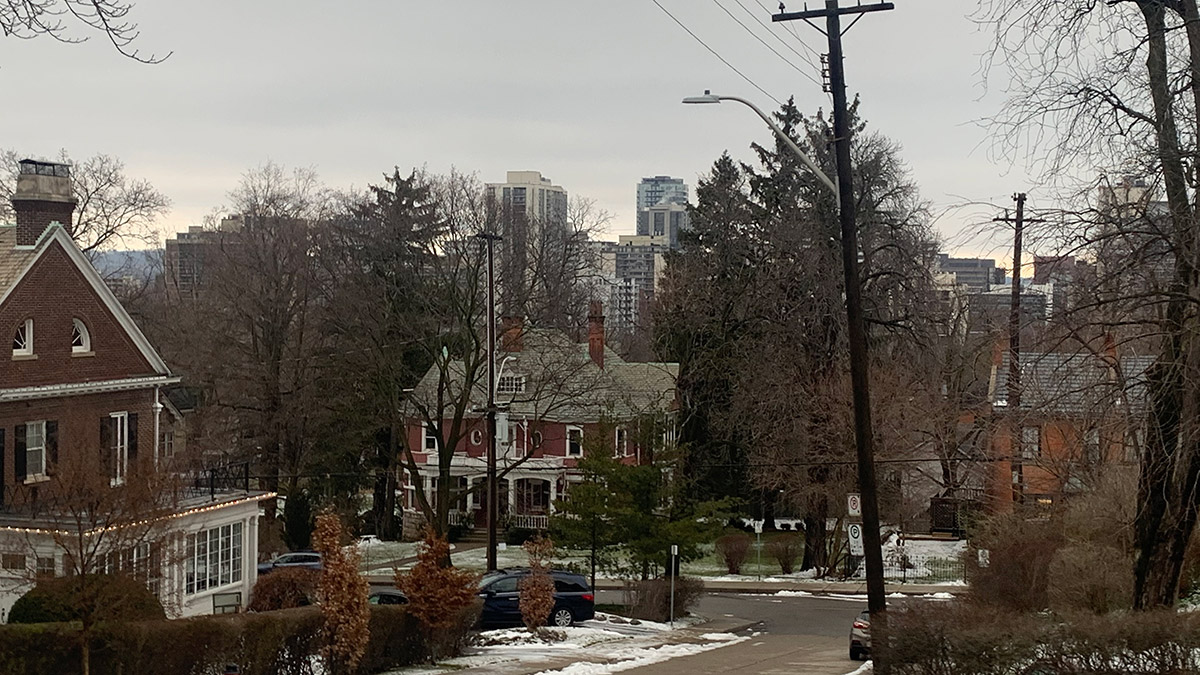
Mayor Fred Eisenberger refused, telling CBC Hamilton that halving the police budget was “not a rational notion.”
Anderson says his experience with the city’s housing market has shattered his expectations of affordability. He says he believes housing has become a commodity for well-heeled investors, not a necessity for residents who need a home.
Case in point: In just six years, the average rent in Hamilton has soared by 39 per cent, from $813 a month in 2014 to $1,133 in 2020. In 2019, the city saw the largest annual jump in rent rates in the country — 25 per cent, according to Rentals.ca.
In 2019, almost half of the city’s renters – 45.4 per cent – were in unaffordable housing, paying a third or more of their income for rent, according to the Social Planning and Research Council of Hamilton.
Ironically, the crisis is largely the result of what some hail as a success story for the city. For the past decade, the city nicknamed the Hammer after its gritty working-class history and steel-driven economy has been making a name for itself as hip. Cool. Young.
It was the result of a major push by the city to revitalize the downtown in the 1990s, after decades of decay. Now, it is also called the “Ambitious City,” and “Canada’s Brooklyn,” and slogans such as “Art is the New Steel” and “You can do anything in Hamilton” have swept the city of about 550,000.
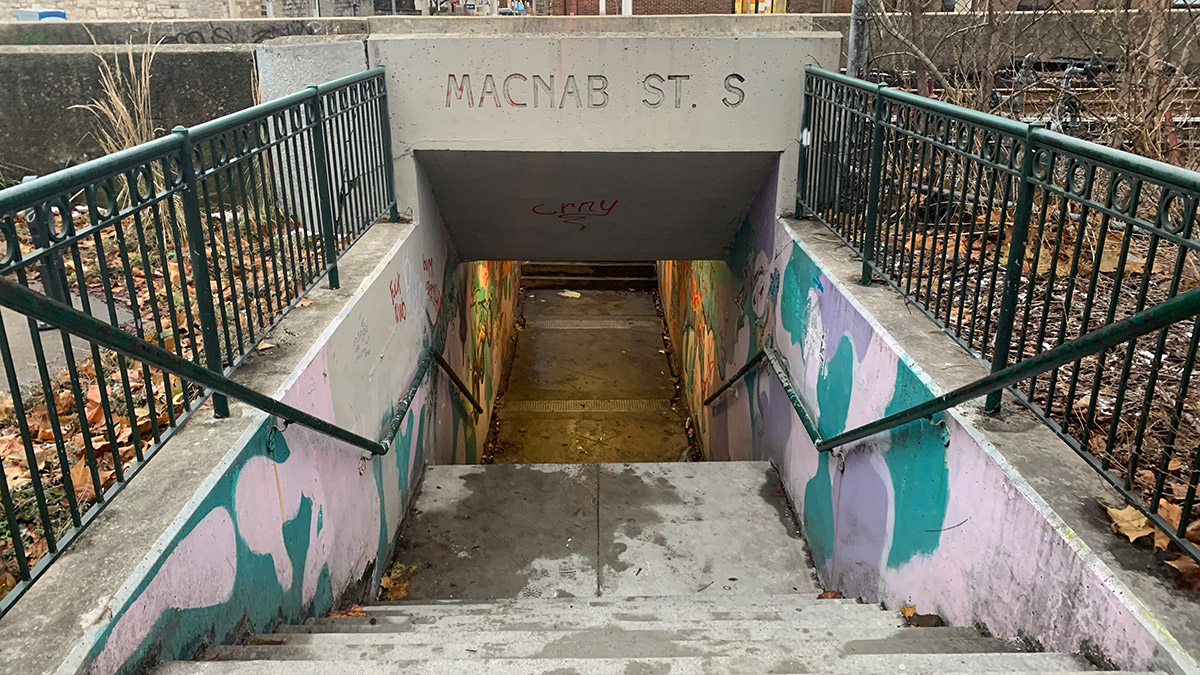
Hamilton’s transformation has boosted the local economy. In 2019, unemployment dropped to 3.5 per cent for the first time in decades. That same year, the city collected a record $1 billion in building permits in eight months. It was all looking up in the Hammer.
But not for everybody.
Erika Morton is a system planning officer with the Homeless Hub research centre, but before that she worked with the Hamilton Youth Housing Support Project from 2010 to 2019.
“I swear rents almost doubled. Every year it was more and more challenging to house these young people because of this process of gentrification,” Morton says.
Around 2014, the private rental market started to cater to a higher socio-economic bracket, says Morton. Sometimes, she says, youth on social assistance couldn’t find an affordable place.
Emily Power, a former volunteer organizer with the Hamilton Tenants’ Solidarity Network, agrees that times are hard for the city’s 68,545 renter households.
She notes that 60,000 Hamiltonians have lost their jobs during the pandemic. While the Canada Emergency Response Benefit (now known as the Canada Recovery Benefit) covers the average rent in Hamilton, Power says when the cheques stop and people don’t get their jobs back, the crisis will amplify quickly.
Power is critical of the response by the province and the city to the housing crisis. She points to the Ontario’s Bill 184, which critics say will help landlords fast-track evictions, and the recent dispersal of Hamilton’s tent cities. The municipal government dismantled several large downtown tent cities in October 2020.
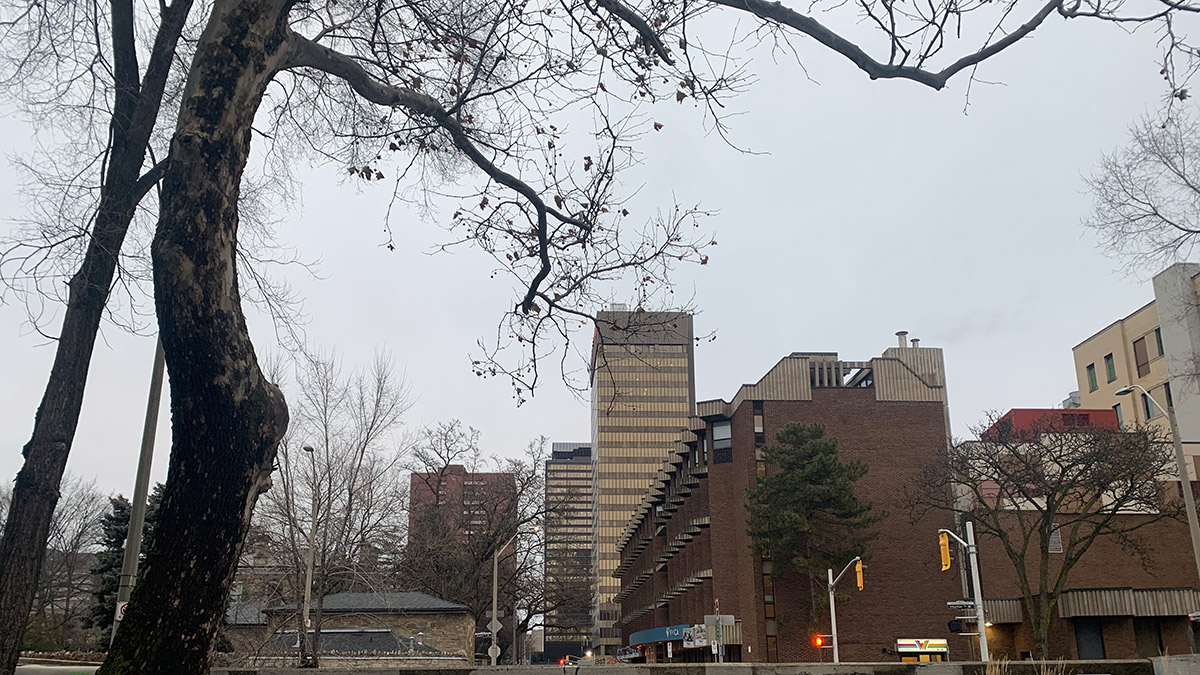
“In a matter of months, there’s going to be hundreds more people evicted and living in tents, and this crisis is only going to balloon,” says Power.
More than 550 landlords have applied to evict tenants over unpaid rent in Hamilton since March 2020, Power says. She expects thousands more eviction applications. She also says larger landlords are consolidating the market, citing the example of InterRent Real Estate Investment Trust, which bought two downtown apartment buildings downtown.
The concentration of ownership gives the company more power to increase rents and evictions.
“No one should lose their home during this pandemic,” Power says.
The gap between the haves and the have nots in Hamilton has been widening for years. Since the 1980s, income inequality has been rising. Hamilton beat out Toronto with the fastest increase in income polarization between 1980 and 2000.
The gulf is especially marked downtown. In inner-city neighbourhoods, the Gini coefficient — which rates income equality on a scale of 0 (equal) to 1 (extremely unequal) — ranged from 0.44 to 0.67 in 2016, according to the Hamilton Spectator. The top end of that range is higher than the Gini coefficient of South Africa, whose rating of 0.63 makes it the world’s most unequal country, according to the World Bank.
“It’s only in the last 10 years or so that people have talked about gentrification in Hamilton,” says Richard Harris, professor emeritus at McMaster University’s School of Earth, Environment and Society. Gentrification is the conversion of inner-city neighbourhoods into living spaces for new, upper-middle class inhabitants.
“For the longest while,” says Harris, “the trend was going in the other direction.”
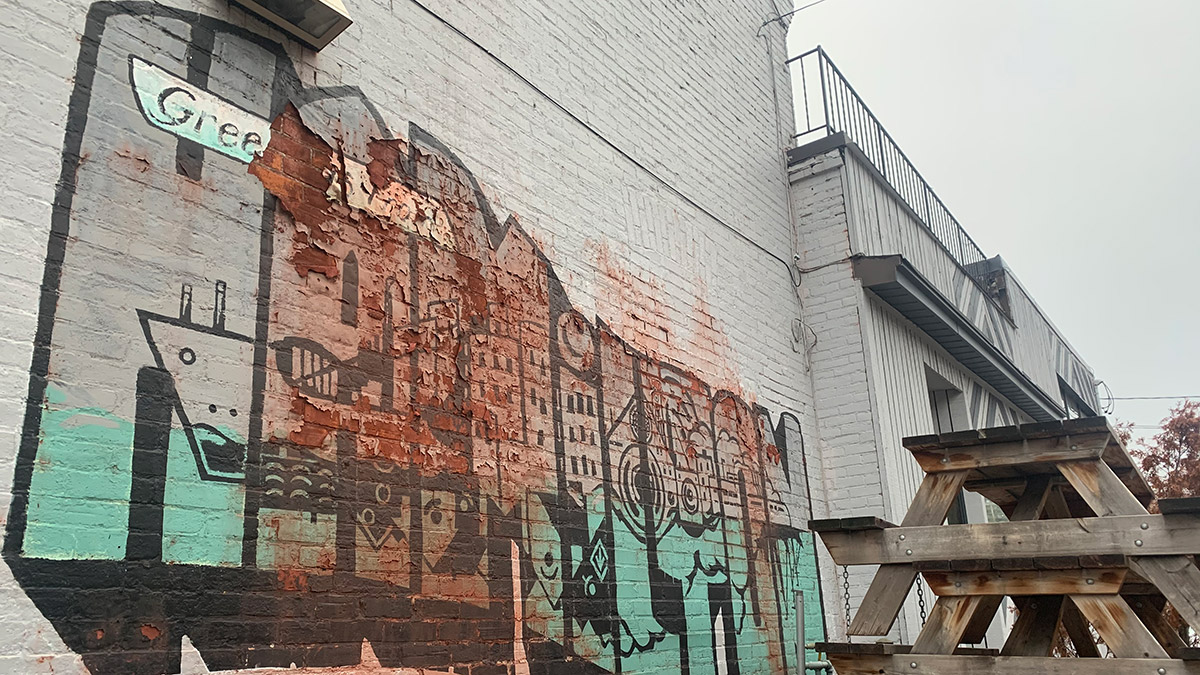
He traces the process back to the push to revitalize downtown after manufacturing, once the driving force behind Hamilton’s economy, began to decline in the 1970s.
The inner city declined from the 1970s until the 2000s with the fall of manufacturing, says Harris. In the book Changing Neighbourhoods, Harris writes that in 1970, the average household income in Hamilton was 92.4 per cent of the average for the census metropolitan area; in 2000, that number was 76.5 per cent, lower than in most other Canadian metropolitan areas.
In 1996, the city launched Open for Business, a program that offered financial incentives to developers willing to build up downtown Hamilton, according to Harris. One incentive promised a 90-per-cent exemption from development charges. Another offered interest-free loans for 25 per cent of the costs of new building construction or renovation.
Mass migration from Toronto then pushed the city past the “tipping point” for gentrification, as skyrocketing housing costs in Toronto sent people westward, he says. This trend is likely to accelerate with the surge in remote work, Harris adds.
Housing costs have indeed been rising during the pandemic in Hamilton. The Realtors’ Association of Hamilton-Burlington reported that the average price for residential properties in February 2021 was $848,719, up 7.7 per cent from January and up 29.5 per cent from February 2020.
Brian Doucet agrees that COVID-19 is an “accelerator of pre-existing trends, pre-existing conditions, pre-existing inequities.” The Canada Research Chair in Cities at the University of Waterloo School of Planning, Doucet is researching Toronto-to-Hamilton migration in a new four-year study.
Hamilton has the right ingredients for gentrification: walkability, density, and an endearing distinct character, Doucet says. “Hamilton was a large and important city 100 years ago; it still is large, still is important. It wasn’t a suburb of Toronto,” Doucet says.
‘Housing can’t be seen as a secure place to live, and a source of investment and speculation. It doesn’t work like that.’
Brian Doucet, Canada research chair in cities, University of Waterloo
Roger Abbiss witnessed the transformation of James Street North in downtown Hamilton over the last decade. The founder of several Hamilton coffee shops — most notably the Mulberry Coffeehouse on James Street North — says he prefers a “sophisticated lens” on gentrification. He doesn’t like gentrification marked by multinational corporations such as Starbucks moving into a neighbourhood and “sucking money out of the city.” However, Abbiss does support economic development when small, locally owned businesses provide employment.
But the pandemic is taking its toll on businesses like his: Abbiss, who sold his interest in the Mulberry, now operates the Dundurn Market on Dundurn Street, and Democracy*, a coffeeshop on Locke Street, which he says is suffering, along with many other downtown businesses. He says he’s not expecting a resurgence until the ongoing vaccination effort is complete. Unfortunately, says Abbiss, some Hamilton businesses won’t survive.
Keanin Loomis, the CEO of the Hamilton Chamber of Commerce, agrees that the pandemic has hit downtown Hamilton businesses hard. Many office buildings are sitting empty, as white-collar employees work from home, and the growing number of homeless people downtown is more noticeable, he says.
Loomis says the pandemic has made the issue of affordable housing more urgent. But building more affordable-housing units will only satisfy a certain percentage of the need, he says.
Noting that in October, the federal government gave $10.8 million to Hamilton to spend on rapid-housing units, Loomis recommends “creative” methods such as buying hotels, or investing in micro-housing to address the immediate need.
Once the pandemic passes, he says, he hopes the Lower City’s office towers will be repopulated, and new condo buildings will be filled as the city recovers from the pandemic. He’s also hoping the Hamilton intra-city LRT is resuscitated. While the province cancelled the project in 2019, the Ontario government is now pitching it to the federal government as a priority transit project in need of funding in the Greater Toronto and Hamilton Area.
Building boom
Such investments “will unleash a building boom in downtown Hamilton,” says Loomis. “The trajectory will not just continue along its path, but in fact be accelerated because of the need for post-COVID stimulus.”
Meanwhile, the pace of development for industrial buildings in Hamilton has been record-breaking during the pandemic, says Norm Schleehahn, the City of Hamilton’s director of economic development. He says 2.5 million square feet of buildings are going up for companies like Amazon and delivery company DHL. Most of the projects that had been planned for Hamilton before the pandemic are still going forward, says Schleehahn.
As the economy picks up, the city must ensure its incentive programs for developers don’t encourage so-called “renovictions,” says Schleehahn. “We have to make sure that we don’t leave anyone behind.”
Power would like to see a moratorium on evictions and forgiveness of rent debt, arguing that landlords can afford it.
Tenants should organize to fight for affordable housing, she says. “Many of your neighbours are facing the same problems,” says Power. “You’re stronger if you work together.”
“Many of your neighbours are facing the same problems. You’re stronger if you work together.”
Emily Power, a former volunteer organizer with the Hamilton Tenants’ Solidarity Network
Doucet says that there needs to be substantial policy transformation, post-pandemic, to address the twin problems of gentrification and the lack of affordable housing.
For investors “who treat housing as a commodity, who buy and sell and maximize its economic value rather than its value as a home,” says Doucet, “this is not a crisis. This is a huge opportunity, and it has been boom-times for the last decade, or more.”
He says lawmakers need to curb speculation in the housing market and invest in affordable housing, which is a federal responsibility. Canada is a rich country, and if we taxed higher earners more, we could spend more on affordable housing, says Doucet.
Housing policy should build non-market, affordable housing rather than subsidizing private landlords by giving people money to top up their rent, he argues.
There are also some Hamilton-specific solutions, Doucet says. For example, Hamilton has a lot of public land, often in the form of parking lots or surplus sites. Instead of selling them, the city could use these sites for genuinely affordable housing by working with non-profit and non-market organizations, Doucet says.
Public land can also have special ownership restrictions, effectively banning the use of Airbnb or multi-property ownership on the land, says Doucet. He says he is skeptical of the achievement of genuinely affordable, non-market housing in a private development on private land, even with amendments such as inclusionary zoning.
“The housing market, in many ways, is doing what it should be doing,” says Doucet. “Housing can’t be seen as a secure place to live, and a source of investment and speculation. It doesn’t work like that.” If we continue to conflate these two roles for housing, he argues, “then you get a messed-up system like we have.”

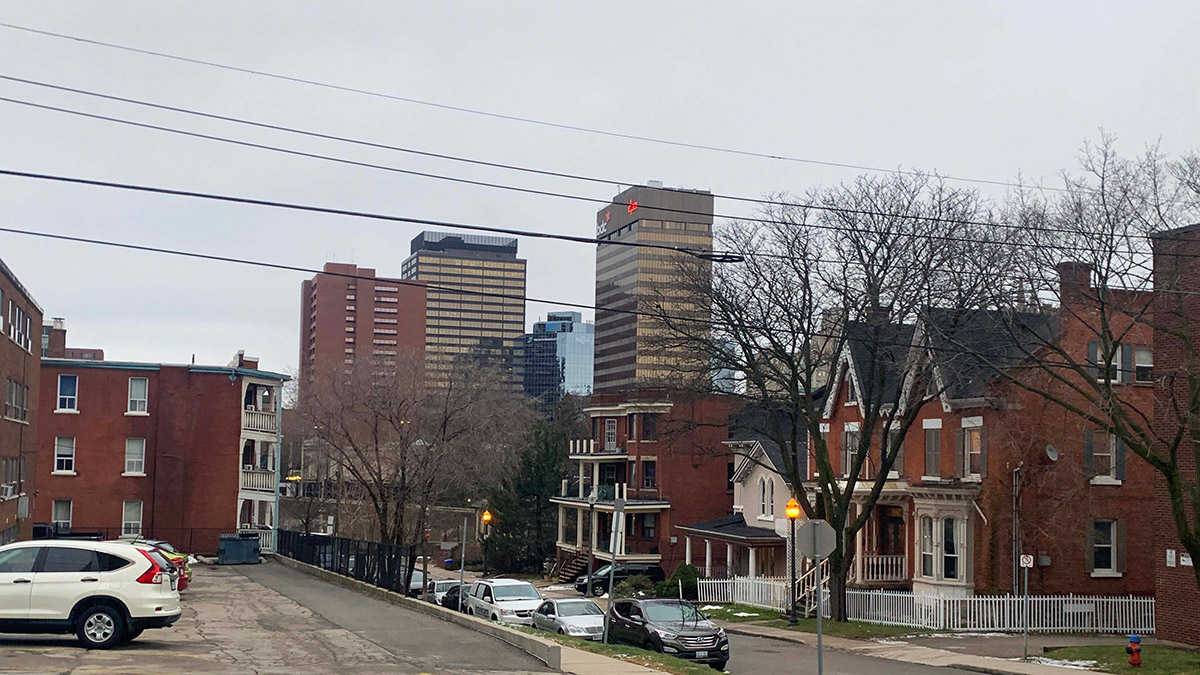



The caption “A vintage mural spelling out HAMILTON on the outside of a coffeeshop in the city’s Kirkendall neighbourhood. [Photo © Talar Stockton]” should read “A vintage mural spelling out HAMILTON on the outside of a coffeeshop in the city’s Durand neighbourhood. [Photo © Talar Stockton]” Also note, the mural is about three years old.
Thanks John we’ll adjust the cutline…
Informative and well-balanced. Although I’ve been living in Hamilton since 1989 I learned stuff. (For example, about the connections between Democracy and the Dundurn Market).
But note that the rent jump period, 2014-2020, is six years, not five.
Hello Mr. Harris,
Thank you for catching that error. It has now been amended.